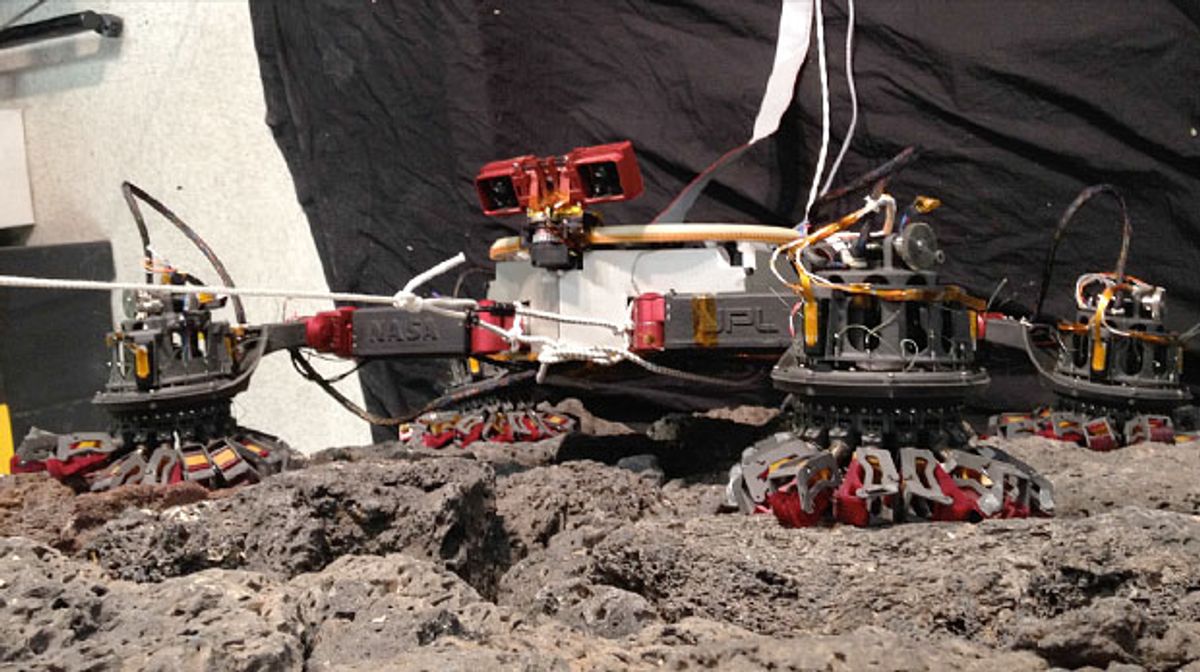At ICRA 2012, JPL introduced its microspine gripper system, which uses hundreds of tiny little claws to grip rough surfaces. We saw some video of a robot hanging from one of these, but it was just being used as a passive anchor. At IROS this week, JPL researchers presented a new video showing an upgraded version of their gripper integrated onto their LEMUR IIB robot, turning it into the "world's first rock climbing robot."
Each one of these grippers relies on over 750 tiny little claws (all made by hand thanks to JPL summer interns) to latch onto the sort of rough surfaces that you're likely to find on other planets and asteroids. The grippers are particularly relevant to asteroids, since they offer a dependable (and reversible) way to grab onto surfaces even in microgravity.
The climbs in this video weren't autonomous, and LEMUR IIB weighs too much and doesn't have enough degrees of freedom to deal with anything but relatively flat rock. Next, JPL is considering outfitting some of their other robots with microspine grippers, including the next generation of LEMUR and even their fancy new DRC robot, RoboSimian.
"Video Presentation of a Rock Climbing Robot," by Aaron Parness, Matt Frost, Jonathan A King, Nitish Thatte, Kevin Witkoe, Moises Nevarez, Michael Garrett, Hrand Aghazarian, and Brett Kennedy, from JPL/Caltech, was presented at IROS 2013 in Tokyo, Japan.
[ JPL Robotics ]
Evan Ackerman is a senior editor at IEEE Spectrum. Since 2007, he has written over 6,000 articles on robotics and technology. He has a degree in Martian geology and is excellent at playing bagpipes.



